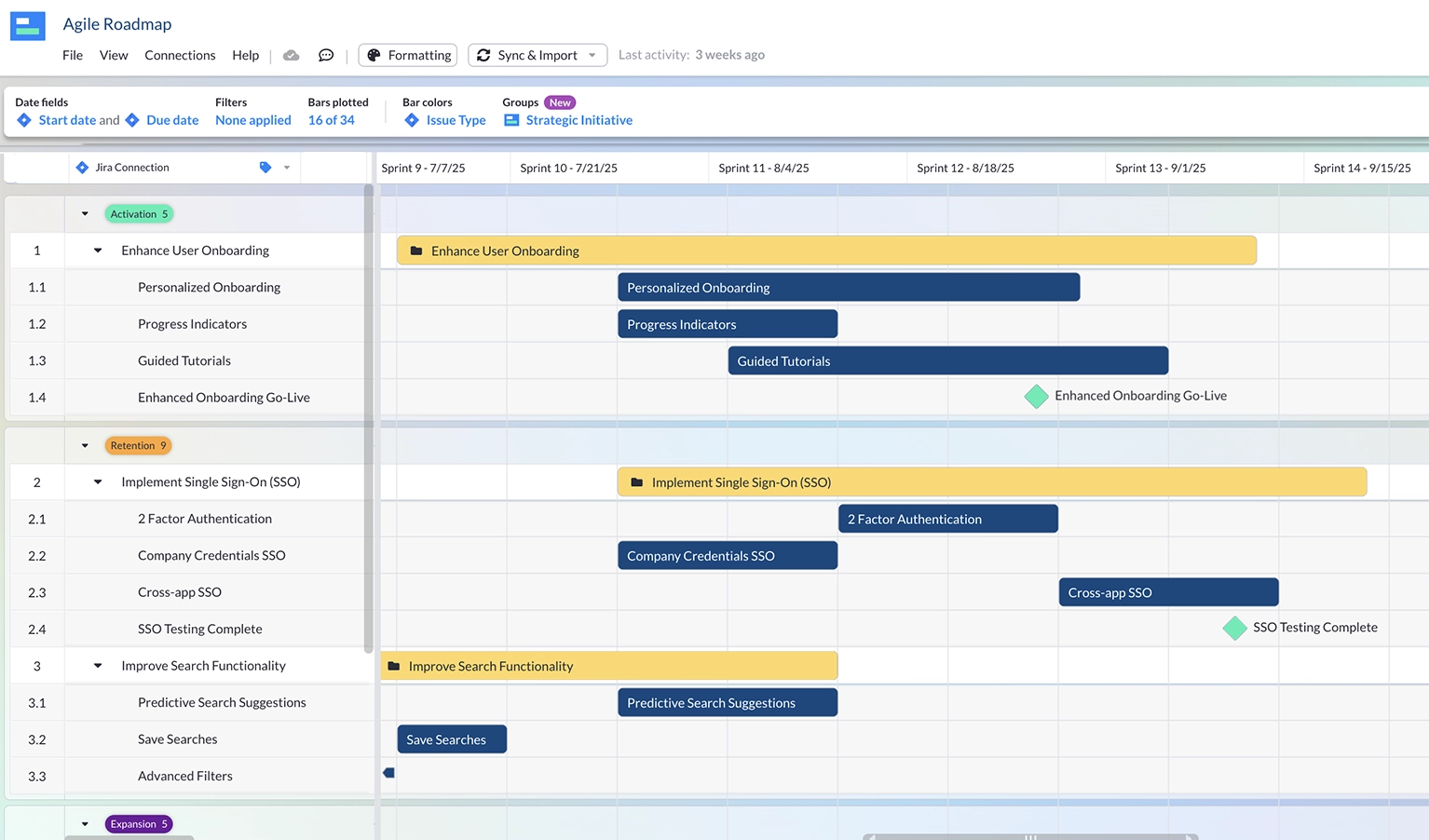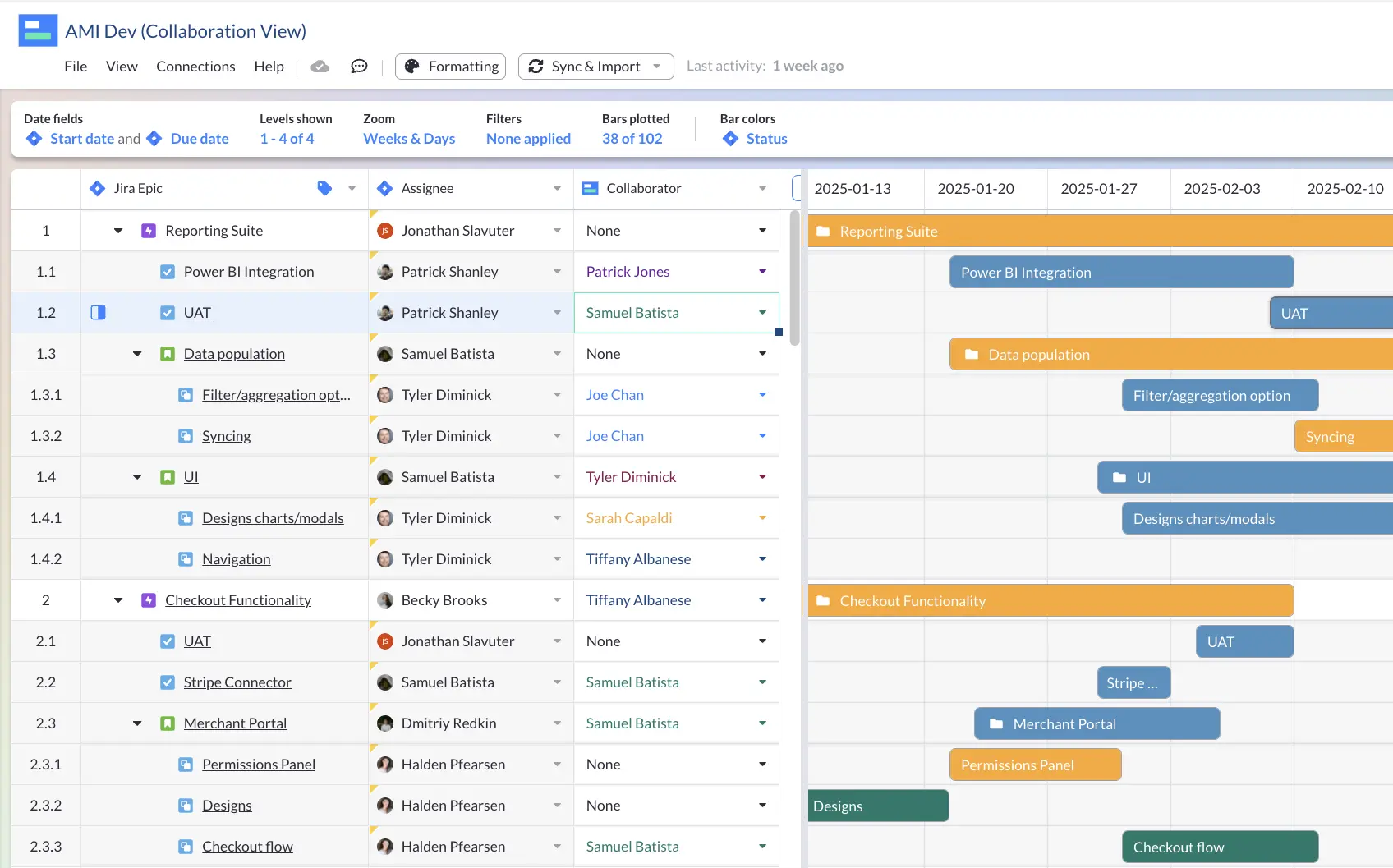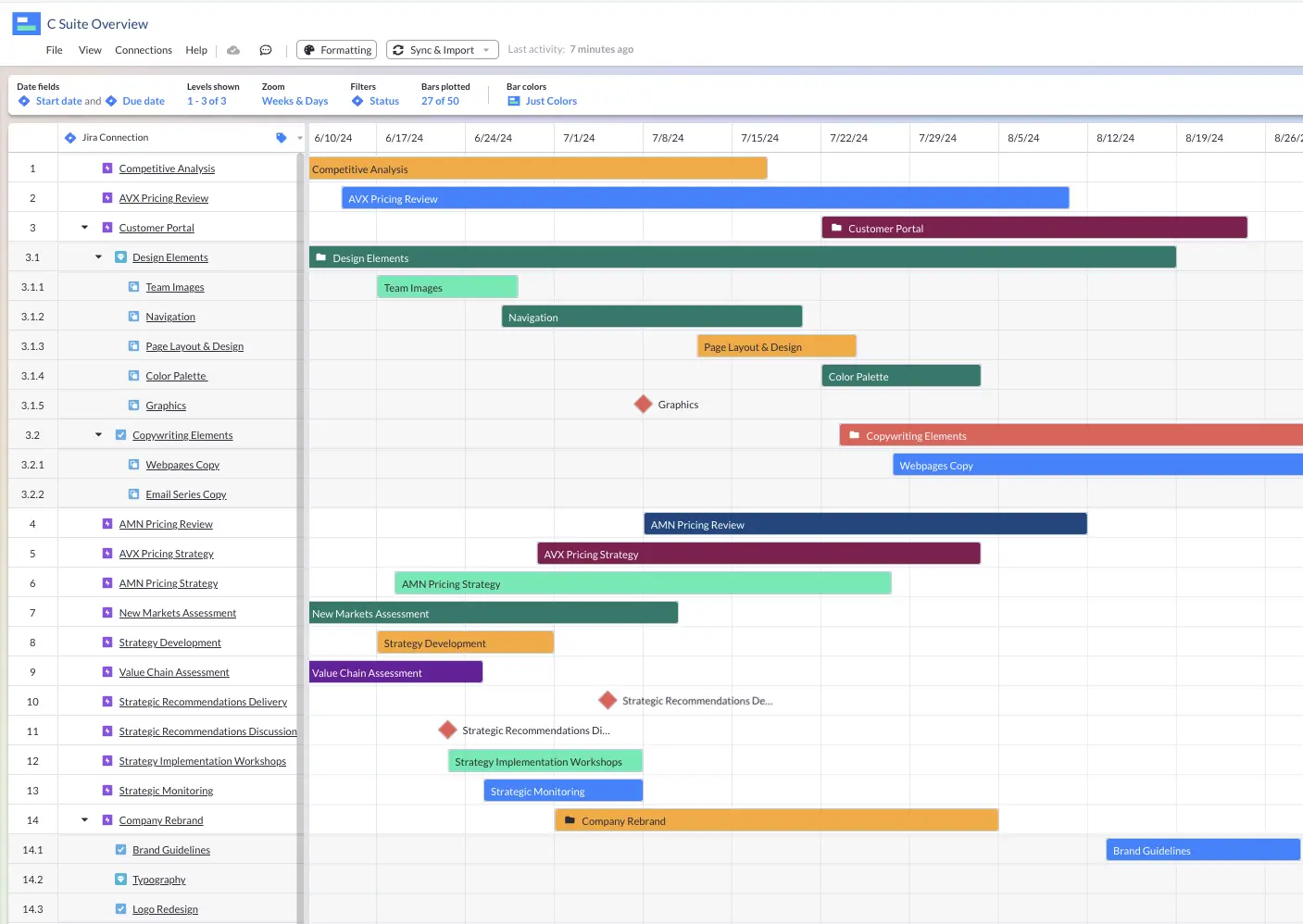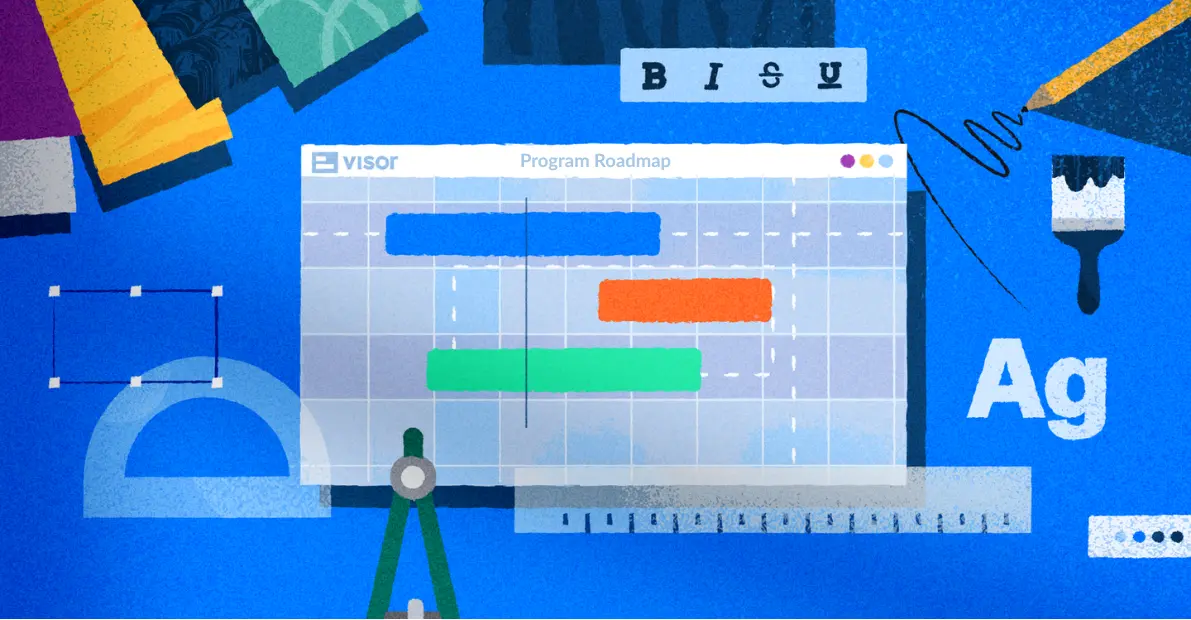
Choosing The Right Agile Collaboration Tools
Agile collaboration tools are important, especially now that remote and hybrid working are commonplace.
If you’re managing Agile projects, you’re bound to encounter various barriers impacting your ability to work together easily and effectively. These challenges become even more acute when you’re working on projects across multiple functional areas or organizations, especially if each ‘lives’ in different systems.
All this means you need to select and use the best Agile collaboration tools for your teams to help you optimize your agile workflow – but which should you choose? Searching online, you’ll encounter an overwhelming number of options. You can’t spend valuable time doing in-depth research on each, or worse, selecting a tool that isn’t right for you.
You’ll be relieved to know I’ve done that work for you. Use this article as your guide to confidently select the right tool for you. The one that will save you time, wow your colleagues, improve Agile Collaboration, and make your projects run more smoothly and effectively.
What Are Agile Collaboration Tools?
Collaboration tools for Agile teams aim to help them, and/or cross-functional squads, work better together. This can include enhancing communication, making shared projects easier to track, and bringing teams/squads together in one place.
Typically, Agile-style collaboration tools can be divided into three buckets:
- Communication Tools
- Task and Project Management
- Brainstorming and Ideation
In this article I’ll be assessing the best Agile collaboration tools for task and project management, and for communicating together.
How Agile Collaboration Tools Help Your Teams and Organization
Agile team collaboration tools enable your Agile team to work better together and with other teams or stakeholders more easily. This isn’t just about managing your own team’s projects. The best collaboration tools break down the barriers between teams with different preferences, priorities, objectives, and, importantly, using different systems.
Agile collaboration tools make it easier for teams to stay updated on, discuss, and contribute to shared tasks or projects in the same place.
Agile Collaboration Tools For Work Management
Here’s my breakdown of the best Agile collaboration tools for managing projects and tasks. I’ve assessed each on how they enable better collaboration between and within teams, their price, and their suitability for different types of teams, organizations, and projects.
In no particular order, they are:
- Visor – Best for visualizing portfolios of projects and working with data from different apps
- Asana – Best for work management with maximum flexibility
- Jira – Best for software development and adjacent teams
- TeamGantt – Best for simpler projects, creative teams/marketing agencies
- ClickUp – Best for small teams seeking a planning ‘hub’ for many types of project/function
Visor
Visor makes intra and inter-company collaboration seamless and more productive by breaking down the silos between teams and the different tools they use or those they don’t understand.
Agile Roadmap Template created in Visor with Jira Data:

Visor is particularly powerful for project portfolio management (PPM), Jira users, product management, and developer teams.
In Visor, you can easily generate a wide range of views for different teams and stakeholders, all based on the same underlying data from apps like Jira and Asana.
Visor makes it easy to share accurate data with stakeholders without manually creating visualizations for each individual or group. You can even add custom fields to provide additional context specific to different stakeholders.
Visor has two-way integrations with Jira, Salesforce, and HubSpot to ensure everything stays in sync and you maintain a single version of truth for all collaborators.
A Visor/Jira Impact Report showed that project managers working in Jira and using Visor spend 45% less time making Gantts, roadmaps, and spreadsheets for shareholders and reduced time spent editing and updating reports that share Jira project data by 84%.
Visor also offers agile-friendly templates, such as sprint backlog templates, along with IT project plan templates and more.
Watch the quick video below to get a taste of how Visor improves Agile collaboration:
Pros:
- Two-way integrations with Jira, Asana, and Salesforce to keep everything in sync
- Easy to create, customize, and share visualizations
- Retains data formatting (for example, hierarchies from Jira)
- Incorporate multiple projects into one roadmap with JQL importing
- Saves project managers tons of time on stakeholder engagement
- It is ideal for cross-functional squad collaboration
- Combines data from multiple systems, breaking down silos between teams
- Enables collaboration and oversight across entire portfolios of projects
Cons:
- Integrations with more systems are expected but not available yet
- Currently, it does not have automated workflow functionality
- Less functionality for task and time tracking
- No chat functionality
Right for:
Jira and Asana users. Project managers who need to view, manage, and track multiple projects. Organizations with cross-functional projects/numerous stakeholders. Organizations using multiple SaaS products.
Wrong for:
Users dependent on systems it doesn’t integrate with (yet).
A Jira-integrated project in Visor

Visor Pricing:
Visor offers a no-commitment 14-day free trial of its Team plan.
Free: Table and Board views, five workspace members, 10k sync credits each month, and two workbooks.
Starter: $18 per user per month. Everything is Free, plus Gantt, Timeline, and Dashboard views. 500 records, 10 workspace members, and 50k monthly sync credits.
Team: $24 per user per month. Everything in Starter, plus Unlimited workbooks, members, and free viewers. 100k monthly sync credits for each user.
Business: $525 per month (flat rate for 100 editors). Everything in the Team plan, plus 2,000,000 monthly sync credits, white glove premium support, and unlimited protected fields.
Learn more about Visor’s pricing plans or Try Visor for free now.
Asana
Asana lacks some features of more advanced project management tools, but it shines when collaboration across functional teams is a priority.
Asana’s signature strength is flexibility. It can be used to manage almost any kind of project which gives it great potential for enabling collaboration across multiple teams and functions. If you’ve felt too constrained by your existing task management tool then you may want to check out Asana.
That flexibility does come with a cost though, you’ll need to put in the time and effort to design your own instance of Asana, how work will be managed in it, processes that need it be followed, and so on.
Similarly, Asana doesn’t come out of the box equipped for Agile. Adapting Asana for Agile is possible but requires numerous workarounds. Don’t expect built-in time tracking, or the ability to quickly switch between a list and aboard.
That said, for teams seeking a task management system which is as simple as it is flexible, and enables different functional teams to work together on specific tasks, Asana should be considered.
Here’s a quick video from Asana explaining their platform:
Pros:
- Highly flexible, can fit all types of teams/projects
- Easy to use, drag and drop
- Fantastic advanced search functionality
- Customizable automation
- Create your own dashboards
- Large number of integrations (including Slack, Microsoft Teams, and Trello)
Cons:
- Requires at least a few weeks of trial and error to get your setup right
- Struggles with coordinating multiple intertwined projects
- Basic and underwhelming in-built reports
- No native Agile-specific functionality
- Limitations of specific views, such as Gantt charts in Asana
Right for:
Collaborating across functions with smaller, diverse projects. Teams that want something more bespoke and are willing to put the time in to get it.
Wrong for:
Teams who want an out-of-the-box product, manage complex intertwined projects, or who need a robust, strictly Agile configuration.
Asana Pricing
Personal (free): 11 seats. Unlimited tasks and projects. Features required to manage more complex projects are not included.
Starter: $10.99 per user per month annually/$13.49 if paid monthly. Maximum of 500 teammates and 250 automations per month.
Advanced: $26.51 per user per month annually/$ 32.44 if paid monthly. Maximum of 500 teammates and 25,000 automations per month.
Jira
Purpose built and refined for Agile software development teams, Jira has a wide range of features to support collaboration on projects, with superb commenting and communication, well structured processes to support Agile, and extremely useful reporting on project, team and global levels.
However, when broadened to cross-functional collaboration or simply reporting to stakeholders, Jira hits a wall. Because of its complexity and jargon, people outside of development teams are unlikely to be able or willing to learn Jira. This often leads to lots of exporting, working on spreadsheets, and creating presentations.
In recognition of this, Jira Work Management was created, presenting Jira in an easier to use and digest format for your wider business. But many users of JWM still opine issues with ease of use, the steep learning curve and, ironically, very limited collaboration features.
Fortunately, fully integrated solutions (such as Visor – also featured on my list) make Jira data presentable and interpretable for people outside your team (e.g. senior stakeholders, customer success, wider company), saving you the time and effort creating Jira roadmaps, or presentations, and messing around with exports.
If you’re managing an Agile software development team you should definitely try Jira, it is so powerful, dependable, and well-refined for dev teams. But you may need to pair it with an integrated solution like Visor to collaborate with/report to people outside development.
Here’s a very quick video summary of Jira software from Atlassian:
Pros:
- Unmatched depth of well-refined features specifically to support any Agile methodology
- Extensive tools to support software development
- Customizable workflows, boards
- A wide range of advanced, robust reports
- Fantastic Free plan
- Huge range of integrations with Atlassian and 3rd party solutions
Cons:
- Can seem heavy for small tasks
- Many tools are redundant for non-developers/adjacent functions
- Limited visualization options
- Complexity and breadth means a steep learning curve
- Number of customizations can increase complexity
- Not really suitable for managing non-Agile projects
Right for:
Software development teams (and adjacent teams) seeking a project management tool dedicated to Agile.
Wrong for:
Cross-functional Squad collaboration. Teams that require flexibility for non-Agile or Agile-lite.
Jira Pricing:
Jira’s pricing structure includes reduced rates for larger user numbers. Check directly on the Jira pricing page for accurate estimates based on your team’s size and use the below as a rough guide only.
Free: Maximum 10 users. Unlimited project boards. No user roles/permissions or data residency. 2GB of storage.
Standard: $6.79 per user per month annually/$8.15 if paid monthly. Includes data residency, user roles and permissions and audit logs. No advanced planning or ‘Atlassian Intelligence’ (AI). 250GB storage.
Premium: $7.91 per user per month annually/$16 if paid monthly. Maximum of 500 teammates and 25,000 automations per month.
ClickUp
ClickUp has the self-proclaimed aim to be “one app to replace them all”. It wants you to use it for managing projects, tracking objectives and key results (OKR), chatting, brainstorming, and more. It’s enormously feature-rich, but can it hope to achieve those lofty ambitions?
ClickUp includes multiple views (list, Gantt, calendar, boards) alongside its ‘Box View’, which gives an overview of each team member’s capacity and workload, with the aim of preventing burnout.
The “Sprints ClickApp”, as the name suggests, is specifically designed to support Agile project management. Sprint durations, workflows, statuses, and boards can all be customized to support the Agile methodology you’re using, giving you a bit more flexibility than something like Jira.
The ability to embed views from other apps like Miro and Airtable and make changes to them from within ClickUp is a unique feature to help teams using different apps to share information more easily. The documentation area, chat, mind map, and digital whiteboard features all increase the potential for collaboration, for teams that are willing to dive in and use it.
ClickUp’s feature set is huge and many (such as the messaging functionality) might not be adopted by your team. Even discounting those features, it does offer a great alternative to more restrictive and sometimes intimidating Agile focused applications. The high level of customization is great for teams that want more flexibility, and the ability to properly manage Agile and non-Agile projects simultaneously makes cross-functional collaboration in the same platform possible.
Watch the short video below to see how collaboration happens in ClickUp:
Pros:
- Great Agile-specific functionality
- Flexible enough to support non-Agile projects too
- Inbuilt whiteboard brainstorming
- Wide range of integrations
- Huge level of customization possible
- Real-time chat
Cons:
- The sheer number of features can be overwhelming
- More complex than some other options – prepare for a learning curve
- The number of options during setup can cause decision fatigue
- Some features will be underutilized or ignored by most teams
Right for:
Small organizations on a budget or solo freelancers seeking a cross-functional hub.
Wrong for:
Established teams with existing tools seeking a straightforward workspace to collaborate on cross-functional projects
ClickUp Pricing:
Free: Maximum 10 users. Limitations on features and storage. Maximum 100 custom fields.
Unlimited: $5 per user per month annually/$9 if paid monthly. Unlimited users, custom fields, and storage.
Business: $12 per user per month annually/$19 if paid monthly.
Business Plus: $19 per user per month annually/$29 if paid monthly.
TeamGantt
TeamGantt is a simple project management app, and as the name suggests is centered around the use of Gantt charts. Those Gantt Charts are easy to build and adjust with drag and drop functionality. It’s highly accessible and quick to understand for different teams and stakeholders, even those less familiar with project management tools and planning/Agile methodologies.
This means Agile teams and other collaborators can easily create Gantt Charts to manage shared projects, with tasks and dependencies assigned to specific teams, task grouping, and sub-groups to help keep larger projects organized.
TeamGantt has built in collaboration tools including a discussion panel for each project, task specific comments (including tagging to notify specific people via email), and a file store for that project.
However, integrations are limited, with only Slack, Trello and Zapier. They do have an open API you can make use of, but that to some extent undermines its key strength of ease of use and roll-out.
Overall, TeamGantt is great if you need something really simple for cross-functional collaboration. You can expect all project members and stakeholders to use it, but you are not already using another platform to manage your projects. Product and development teams used to more purpose built systems may be disappointed. You can also look at alternatives to TeamGantt.
Pros:
- Easy to use and intuitive
- Fast to set up
- Wide range of superb tutorial content
- Import existing timelines built in Excel as CSVs.
Cons:
- Limited number of pre-built integrations (only Slack, Trello, Zapier – no Jira)
- Expensive
- Unlimited number of projects only at Enterprise level ($99 per month per manager)
- Limited and basic reporting
- Tracking collaborative discussions can be difficult
- Lacks custom views for different stakeholders
Right for:
Creative design teams, Marketing. Smaller teams with limited SaaS to integrate, low number of projects and in need of something very easy to use.
Wrong for:
Product teams, Jira users. Managing projects with many different stakeholders types, functions, and/or apps.
TeamGantt Pricing
Free plan: Includes one manager and up to two collaborators. Maximum of one project and up to 60 tasks.
Lite: $19 per month per manager annually/$24 if paid monthly. Maximum of five projects. Unlimited collaborators per manager.
Pro: $49 per month per manager annually/$59 if paid monthly. Maximum of 20 projects. Unlimited collaborators per manager.
Enterprise: Starts at $99 per month per manager. This plan supports unlimited projects, tasks and collaborators per manager.
Agile Collaboration Tools For Communication
Slack
Slack has long been the go-to communication platform for software development teams, and given it’s enormous breadth of integrations with tools popular with developers it’s easy to see why. Like Microsoft Teams, Slack has Channels in which project discussions, document sharing, and updates can happen.
Slack is definitely outmatched on the video call and document sharing front by tools like Microsoft Teams. It is designed much more for teams that communicate constantly via text and has a wide range of features to use the messages you send to boost productivity.
You can also use helpful features like AI Slack bots to give you reminders, and can even create custom workflows to automate tasks or messages to channels/team members based on certain triggers.
Slack is principally a messaging app, designed for teams that prefer ongoing communication in text. Its true power, especially for Agile teams, is unleashed when integrated with a larger project management system like Jira.
Pros:
- In-app bots provide a useful alternative to documentation
- Granular notification controls
- Great search function with modifiers
- Deep integration with Google Workspace
- Greater customization options than competitors
- Greater accessibility for people without a Microsoft email address
Cons:
- Weaker voice/video chat offering than
- Limited meeting-focused productivity tools
- Limited chat history on the free plan
- 90-day limit on file storage
Here’s a quick video introduction to Slack:
Right for:
Teams that need integration third party software. Less concerned about video/voice communication. Work primarily in Google/non-Microsoft apps. Generally smaller organizations.
Wrong for:
Teams that do most of their communication via voice/video. Organizations that run on Microsoft 365.
Slack Pricing
Free plan: Limited to one workspace, 10 app integrations or published workflows, and max 90 days of message history. No employee directory
Pro: $5.75 per active user per month (when paying annually). Includes custom user groups, analytics, automation features, and unlimited chat history. No SAML-based-single-sign-on. No Audit logs, and ‘premium workflows’ are limited to 1,000 runs per month.
Business: $9.75 per active user per month (when paying annually). As Pro, but including SAML-based-SSO, data exports for all messages, improved user management (SCIM provisioning), data residency, and 2,000 premium workflow runs per month.
Enterprise: No pricing listing online. Includes everything in the Business plan, plus a built-in employee directory, unlimited workspaces, and support for data loss prevention, e-discovery, offline backup.
More detail on Slack Pricing Plans.
Microsoft Teams
Microsoft Teams is designed to be a comprehensive collaboration tool, combining chat, video calls, and meetings, file sharing, and project management features in one platform. The functionality most people will use are the messaging, video meetings, and Teams ‘Channels’.
Teams Channels are designed for sharing files, updates, and general collaboration and can be a great way to keep everything in one place, especially when you’re working in squads from really divergent departments, all using different day-to-day systems.
Microsoft Teams benefits from seamless integration with the entire Microsoft portfolio, seemingly making it ideal for organizations running on Microsoft 365. It also has some nice additional features to aid collaboration, like Microsoft Whiteboard, which you can pull up mid-meeting and start brainstorming together.
However, there is a real lack of 3rd party integrations. Realistically, most Agile teams are not going to be using Microsoft Project or Planner to manage their work, meaning for most Agile teams Microsoft Teams is best evaluated as a messaging and conferencing application, with some files sharing with wider squads. Its robustness in these areas makes it great for team meetings and ongoing communication with cross-functional people who don’t use your PM system.
Pros:
- Seamless integration with Microsoft 365 apps
- Free unlimited chat history
- Outlook Calendar integration
- Full spec voice/video conferencing included with a wide range of features to support in-meeting collaboration
- Unlimited chat history
- Robust security on all plans
- Includes lots of in-meeting collaboration tools, like Microsoft Whiteboard
Cons:
- Lack of 3rd party integrations
- Limited notification options – easy to miss or become lost in notifications
- Lack of granularity in notification controls
- Lack of search filtering
- Interface is difficult for many and not as intuitive as Slack
- Loses a great deal of value without Microsoft 365 in place
- No free plan as of April 2023 – But free one-month trials available on all plans.
- Annual subscription only (once the free one-month trial has expired)
Right for:
Organizations on Microsoft 365 who don’t care about 3rd party integrations or people who want built in project management functionality.
Wrong for:
Teams that communicate primarily via text, value productivity enablers, want customization, and need a wider range of 3rd part integrations. Smaller organizations/start-ups which are more likely to chop and change systems.
Microsoft Teams Pricing
Free plan: None (since April 2023). Free one-month trials are available for all plans.
Essentials: $4.00 per user per month (paid annually). Limited to 300 participants per meeting, 10GB storage per user. Most features included, main limitations are on storage and level of support available. No admin tools for managing users/apps.
Business Basic: $6.00 per user per month (paid annually). Improves on the Essentials plan with administration tools for managing users, enforced multifactor authentication, auditing/reporting and 1TB of file storage per user. Online/mobile versions of Excel, Outlook, Word, PowerPoint included.
Business Standard: $12.50 per user per month (paid annually). Improves on the Business Basic plan with desktop versions of Microsoft 365 apps, plus collaborative workspaces and webinar hosting.
Business Premium: $22.00 per user per month (paid annually). Improves on the Business Standard plan with advanced security, access/data controls, and cybersecurity threat protection.
More detail on Microsoft Teams Pricing Plans.
Agile Collaboration Tool Selection – Key Considerations
Choosing the right Agile collaboration tool for your team and organization will hinge on the following factors, keep them in mind:
- Fit with your Agile approach
- Your team size
- Your budget
- Your key existing systems (integrations)
- Whether you will use it to collaborate with people outside your team/function
- The complexity of your projects
- The level of flexibility and customization vs. out-of-the-box structure desired
Agile Collaboration Tools – In Summary
Having taken a look at my pick of the best Agile collaboration tools, you should now have a better idea of what’s available, the strengths and weaknesses of each, and, importantly, which is best suited to you, your team, and your organization.
I’ve given you an overview of the best tools for managing work and communicating together. Now that you have a better idea of what might be most useful to you give them a try. All these tools (excluding Microsoft Teams) have a free offering, and with a mix of test driving and a bit more digging, you’ll soon find a tool that you are confident will improve collaboration for your Agile team.
Collaboration is increasingly cross-functional. Have you noticed that organizations everywhere are seeking that perfect tool that everyone can use to do everything?
This, you’ll probably agree, is at best a long way off. Many of the solutions above offer a place for both Agile teams and multidisciplinary squads to work together more effectively, but teams will likely also keep working on tools that best fit their function, ways of working and priorities.
That’s why we created Visor so that teams like yours can more easily bring data together from different systems in a way that all your collaborators and stakeholders can understand without the need to spend so much time exporting, playing with spreadsheets, and updating presentations.
Planning every project in your portfolio in Visor

If you would like to learn more, try Visor now for free (no credit card required), and in a minute or two, you will be creating powerful, engaging visualizations for your stakeholders.




